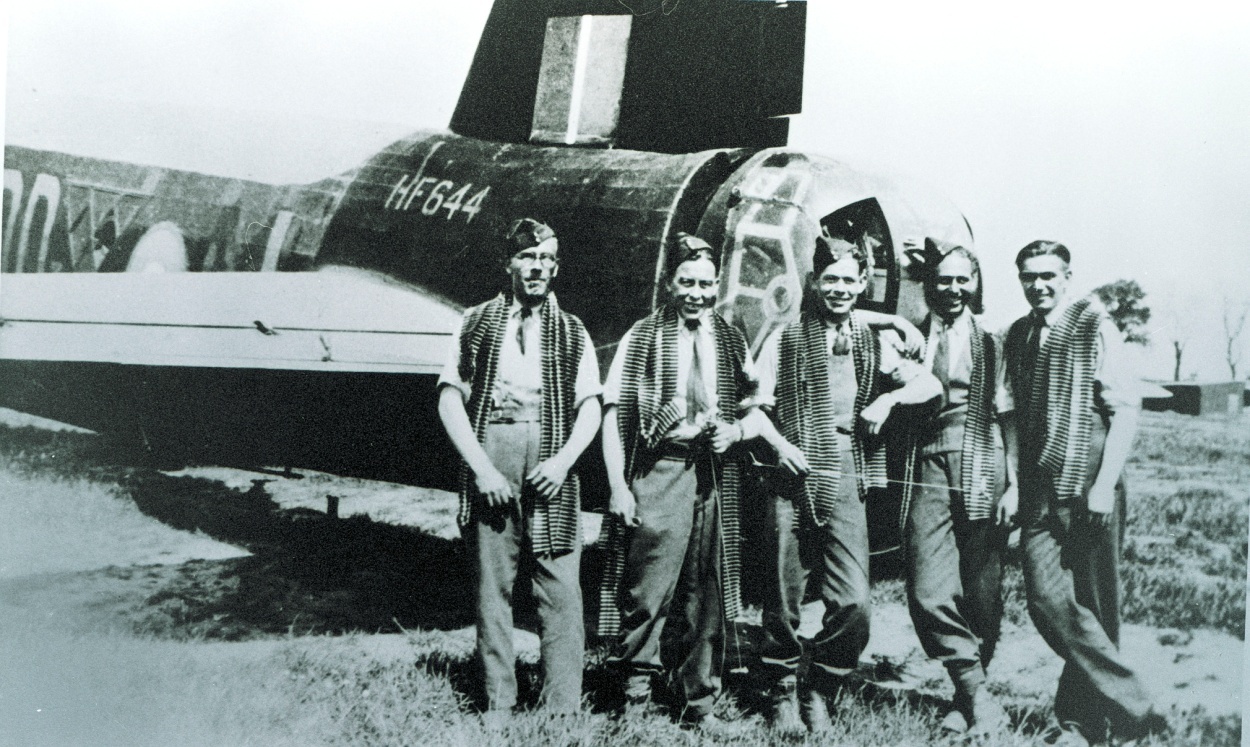CARDALL’S CORNER – Wellesbourne’s WW2 Airfield – Ian Brodie
By Ian Brodie
We are used to seeing aircraft above us here in Warwickshire. Airliners carrying holidaymakers and business people to all parts of the globe pass high above our heads and others, bound to or from Birmingham airport are much lower. As you take the road from Wellesbourne, where the Sunday market is held, on your way to Stratford, you pass a small airfield on which may be seen a camouflaged 1950s ex-RAF jet bomber, sundry parked light aeroplanes and a gaggle of helicopters. It is hard to believe that this small landing field, in the 1940s, was one of the busiest RAF training airfields in the country.
The RAF’s No 22 Operational Training Unit had to turn out around a hundred and fifty trained crews a month for the Vickers Wellington bomber. The men were formed into crews at Wellesbourne, two pilots, a navigator, a signaller and two gunners, and in eight weeks they had to learn how to operate and defend the aircraft as a team. Many of the aircrew were members of the Royal Canadian Air Force. Some were, in fact, Americans who defied their country’s laws to join the RCAF in Canada. Until the entry of the USA into the war, American citizens faced gaol, fines and loss of citizenship if they joined another country’s armed forces.
On the ground, the aircraft had to be maintained by a large contingent of RAF personnel. The picture, from the Alan Griffin Archive in the Southam Heritage Collection, shows five armourers standing by the tail gun turret of a Wellington bomber at Wellesbourne. They are draped in some of the ammunition belts for the four machine guns that were mounted in pairs in the front and rear turrets of the aircraft. The armourers looked after the guns, and the bomb racks, and were responsible for ensuring that everything worked and that each aircraft had the correct ammunition and bombs for each sortie.
RAF Wellesbourne Mountford, as it was officially called, was a small township with its own clerks, cooks, police, medics, transport, and there were the tradesmen who looked after the airframes, engines, radios and electrical systems in each aircraft. As a training unit the population changed almost on a daily basis as the trainees came, acquired skills and departed to operational squadrons. Between 1941 and 1945 about nine thousand Canadians were trained on the Wellington at Wellesbourne.
Unfortunately, the training aircraft were well-used, ex-operational squadron aircraft, old and tired, and somewhat hard to maintain and fly. There were the almost inevitable accidents, due to system failures and pilot error, which resulted in deaths amongst the students. Most of those who died, and ninety-seven were Canadians, are buried in the RAF part of the cemetery in Stratford on Avon.
The airfield ceased to be a Royal Air Force station in 1964 and the land was returned to the original owners. Much reduced in size, it continues to be operated as an airfield although there are plans to close it and to develop it for housing.
First published in the District Advertiser, Southam edition March 2016.


Leave A Comment